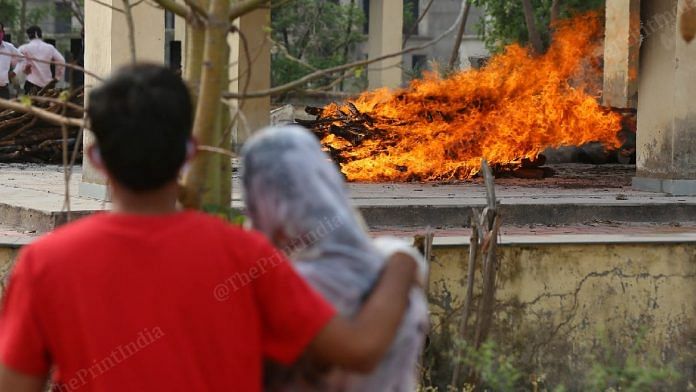During the first semester of the undergraduate degree course in October 2019, we were taught the ‘ABC’ of journalism—accuracy, balance, and context. The instructor said that while balance may be subjective, context is the soul of a story. But if you are shrewd enough to bring in all three fundamental constituents of journalism in your story, you will get the fourth element, depth, on its own.
While pursuing a degree in journalism, we are conditioned to relate the classroom lessons to what’s being reported in the ‘real’ world. This week, when Columbia University announced the Pulitzer Prize for feature photography, I was curious to know if the pictures told the stories of India’s Covid devastation with accuracy, balance, context, and depth. Reuters photographers Adnan Abidi, Sanna Mattoo, Amit Dave, and the late Danish Siddiqui from India have been awarded for “images of Covid’s toll in India that balanced intimacy and devastation while offering viewers a heightened sense of place”. But did those pictures really balance intimacy and devastation? Or did they simply serve the information consumers of tragedy from a Slumdog-themed third world poverty-stricken land?
Journalism and ethics
One of the Pulitzer-winning pictures shows 19-year-old Pranav Mishra, kneeling in front of the body of his mother Mamta Mishra who succumbed to Covid. Another shows a corpse lying beneath a funeral pyre during a mass funeral in a crematorium in Delhi. A third, less atrocious picture, has a man grieving outside a Delhi hospital as his family member is declared dead. There is a nakedness to the truth of the time that these pictures show, exposing the sheer heartlessness of journalism attempting to be a draft of history. Photographing corpses beneath mass funeral pyres shows that goodwill, which is an important element of journalism, is missing. As veteran journalist Chitra Subramaniam had asserted earlier, you cannot quantify goodwill in journalism but its absence is felt when there is none. Likewise, its presence is also felt when there is enough of it.
I wish to use the example of The Indian Express profile of Indians who reportedly lost their lives due to lack of medical oxygen to illustrate my point. The full-page profile uses images of people who died during the second wave of Covid, instead of images of unattended corpses which it easily could have. The profile has an implicit element of goodwill aiming to assert the facts about the medical oxygen crisis in the face of the government’s denial about the same. While the Pulitzer-winning pictures do show the truth about an atrocious health crisis, they also feed into a narrative of Eurocentric assumptions about India, and lacks journalistic goodwill. For many like late Mamta Mishra, it also denies the right to a dignified departure, a privilege which perhaps was only available to those who had to be buried in New York’s Central Park at the height of the Covid crisis in the United States.
Also read: 3 photojournalists win Pulitzer for Kashmir coverage. Here’s list of Indians who won in past
The case for moral responsibility
In his memoir, The Commissioner for Lost Causes, veteran journalist Arun Shourie in a chapter titled ‘Moral Responsibility’, reminisces the story of Bhagalpur blindings. In the late 1970s and early 1980s, prisoners at Bihar’s Bhagalpur jails were blinded by police as retribution for their alleged crimes. The story published with images of blinded prisoners, which Shourie recollected, stoked a reaction from an editor in blunt Punjabi, “What was the need for putting that damned image on the front page? I couldn’t eat my breakfast.”
In the blurred line between deaths/damages due to State atrocities versus deaths due to State apathy, while reporting on the latter, the journalistic attribution in its pursuit of truth should not fail to dignify the dead. Stories like Bhagalpur blindings must jolt people and should carry the images, as they had, to depict State atrocities at their worst. Whereas the choice of published photos depicting the worst of India’s Covid crisis should have sensitised people against the viral disease.
There is a need for journalists to take ‘moral responsibility’ while reporting or photographing the deaths, due to the State’s apathy or otherwise. The Pulitzer-winning pictures of India’s Covid toll, although contextually truthful, lack sensitivity and are a sad promotion of this journalistic heartlessness.
The author is a student at Delhi School of Journalism, University of Delhi. Views are personal







